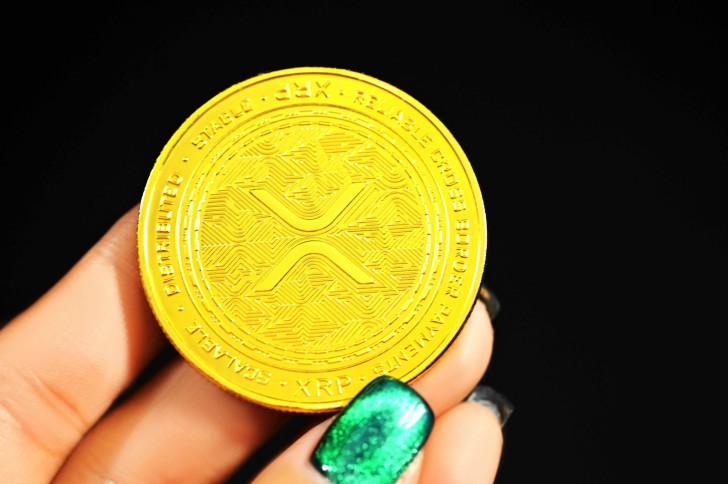Although the first version of screeners were developed for the stock market, they have become very practical for crypto traders in modern times. The possibilities become even greater when they are used with things such as an XRP price chart guide as they can turn your trading experience upside down. Rather than reacting to the market, you can be thinking about your moves in advance.
What Ultimately Is a Stock Screener?
Think of a stock screener as a personalized crypto glossary sieve. Instead of having to sort through hundreds of coins trying to sift through ones that might be worthy of trading, the stock screener serves as a filter for you.
You set parameters (price range, volume, technical indicators...) and the stock screener will quickly show you the coins that met those specific parameters. For example, it can show you cryptos that just had a huge volume spike, or coins that are currently trading above their moving average.
Essentially, it saves you time, cuts through the noise, and helps you focus on legitimate opportunities.
The Importance of Screeners in Crypto
The crypto market has no closing time. Stocks go home at 4pm or over the weekend, but prices of Paybis crypto exchange can ebb and flow in the wee hours of the morning or during a Sunday football game. Size isn't the problem; tracking everything without tools is almost impossible.
Here’s why screeners are fabulous for crypto traders:
They save you time – instead of staring at numerous charts, you receive quick shortlists of potential trades.
They keep you objective – you're trading signals, not gut feelings.
They are flexible to your style - you can build filters to fit your own strategies, day trading, or long-term holding.
They can mitigate risk - by filtering based on predetermined criteria, you avoid hype chasing and panic buying.
Pair with an XRP chart for additional analysis and you have a system that is efficient and simple.
Why XRP is Screeners Sweetspot
Ripple's XRP has always been a hot crypto currency because of many reasons. Its involvement in global payments, legal disputes, and its propensity to move around in price makes it an important asset for traders. With that much attention, prices can move fast.
Here's where a screener comes in handy. For example,
You can use a screener to identify when trading volume in XRP spikes from nowhere.
Once you have identified it, you'll be able to bring up the XRP chart to see if it is a true breakout or if it was just noise.
Screeners narrow down the timing of the XRP chart guide, and given the speedy nature of trading you can deploy your own action.
Creating a Screener Strategy Around XRP
If adopting an XRP focused strategy, below are some suggestions to more effectively engage screeners:
Use Volume Filters - XRP commonly makes big moves after bursts of activity. A volume filter can give you an early heads up.
Set Price Ranges - You can catch breakouts by monitoring XRP in wider price ranges, like between $0.45–$0.50.
Combine With Indicators - Pull in RSI, MACD or moving averages to screen for only setups you want to trade based on your chart study.
Evaluate Sentiment - Some next-level screeners are able to evaluate the market's sentiment around for instance determining if the XRP buzz is bullish or bearish.
After you filtered the screeners you will always refer back to the XRP chart - that is where the strategy turns into action.
Why the XRP Price Chart Guide Is Important
A screener tells you where to look for an opportunity, but the XRP price chart guide tells you the next steps for what to do.
Candlestick patterns, levels upon which price is supported or resisted, and trend lines help you determine the next trade actions, whether it be to enter, hold, or exit. For example:
If your screener shows you that XRP's volume on the day is up twenty percent, the chart can help you confirm whether that volume is pushing the price through a resistance area, or perhaps only bouncing in that area.
If XRP is trading around its 200-day moving average, the chart can help confirm if this could be a buying opportunity, or a warning.
That balance between filtering and confirming is what creates so much power from the screeners and charts.
Do Not Rely on Having Just One Tool
While screeners and charts are useful, they are not the total picture. The best performing traders mix and match:
- Screeners look for opportunities
- Charts provide technical confirmation
- News updates provide insight on significant external events (like Ripple's lawsuits or news about regulatory changes)
- Risk management tools like stop-loss orders provide safety and protect profits
They all, combined, allow for a stronger and safer trading strategy.
To Conclude
Trading cryptos shouldn’t be a guessing game. One of the advantages of using a stock screener is to use it to help you dissect the market, and the XRP price chart guide gets you the contextual information you need to take action. If you can match the two, then you will spend less time reacting to random price changes, and more time proactively executing confident trades tracked by data.
So, next time you check the XRP chart, don't solely make your decision on the spot. Allow your screener to find the opportunity for you first—and then allow the chart to verify if it's a viable trade. This will allow you to transition away from reactive trading, and into a structured plan.
 Editorial staff
Editorial staff

 Editorial staff
Editorial staff


